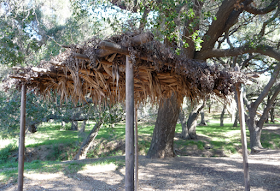★ ★
The third Monday in February is Presidents' Day in America. It is a
national holiday, so there is no mail delivery, banks are closed, and the schools are on recess.
This national holiday celebrates two great presidents,
George Washington and
Abraham Lincoln. Mrs. Yollis' class
researched information about the two men using the
World Book Encyclopedia and
reference books. They wrote down
facts about the presidents.
Next, students took a fact card and turned the key words into a sentence to add to the paragraphs below. Some students turned the facts into several sentences. Notice the fine transitions!
★ ★
Wonderful Washington
(1732-1799)
 George Washington
George Washington was the first president of the United States. He was born on a farm in Virginia in 1732. When Washington was eleven, his father died from a bad illness. Later in his life, he married Martha Custis in 1759. She became the
first First Lady!
George Washington was a soldier in the army. He was so good, he became general of the Continental Army for the American Revolution. This war was against Britain and Washington's army was triumphant. America was born!
George Washington lead the Constitutional Convention where the U.S. Constitution was written. Americans voted Washington to be their very first president in 1789. He was re-elected to a second term and left office in 1797. He died at Mount Vernon on December 14, 1799.
This great president is featured on the one dollar bill and the quarter. In addition, Washington's name is used in many other ways, such as a state, the capital, and school names. Americans honored Washington when they built the
Washington Monument in Washington, D.C.
★ ★
Lovely Lincoln
(1809-1865)

Abraham was born on February 12, 1809, in a log cabin in Kentucky. Lincoln's mom died when he was nine years old. Lincoln lived on the frontier and loved to learn. Surprisingly, he only had one year of formal school.
Abe Lincoln loved to read, and he walked many long miles to borrow books from his friends. Often, he would read by the light of the fire. Abraham Lincoln studied and became a lawyer. Before he was president, Lincoln ran for the Senate. Unfortunately, he lost to Senator Douglas. In 1834, he ran again for the legislature and won!
Lincoln was elected as the sixteenth president in 1860. In 1861, the Civil War started. The northern states and the southern states were fighting. The war lasted the whole time Lincoln was president. In 1863, he freed the slaves in the southern states. In 1865, the Civil War finally ended. His Gettysburg Address is a famous speech that he gave at a battlefield in Gettysburg, Pennsylvania. Sadly, just after the end of the Civil War, President Lincoln was assassinated in a theatre on April 4, 1865.
Lincoln is featured on the penny and the five dollar bill. Cities and schools have been named after him and the
Lincoln Memorial is a place of honor for the president.
★ ★
Do you know any additional facts about these two great presidents?
Which president would you want to be and why?



















































































